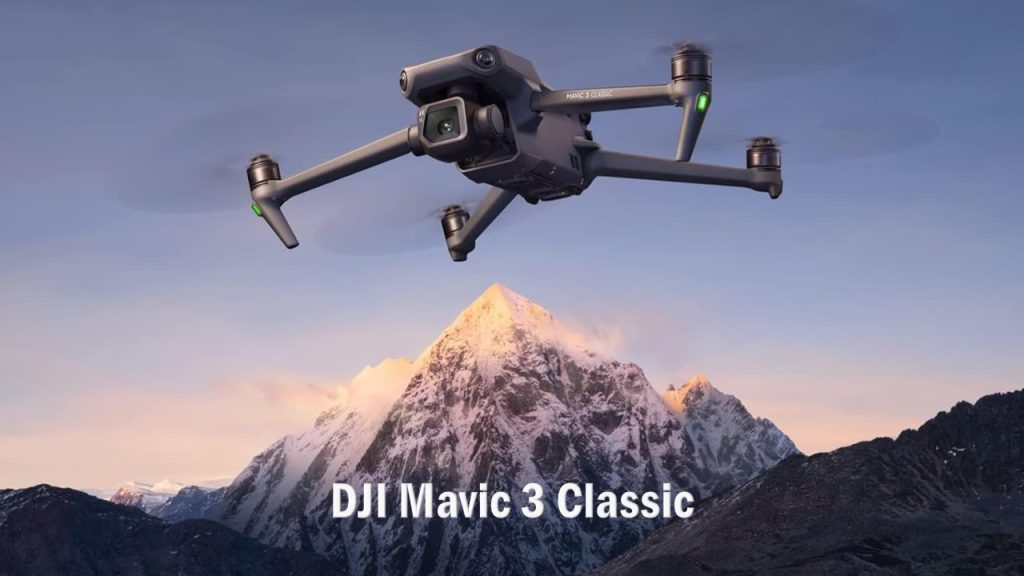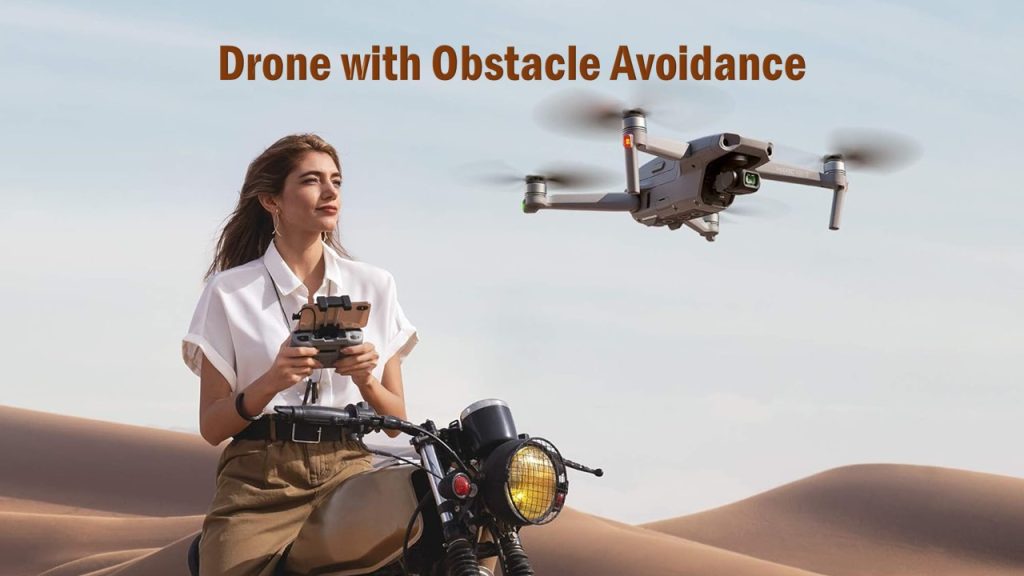Hey there, folks! When it comes to modern aerial photography, professional surveying, or safe recreational flying, choosing the best drone with obstacle avoidance is no longer optional — it is essential. Gone are the days when pilots had to rely solely on manual control. Today’s top-tier drones come equipped with intelligent sensors, real-time object detection, and automated navigation systems that make flying safer and more efficient than ever before.
In this comprehensive guide, we review the top-rated obstacle avoidance drones available today, compare their features, and help you determine which one suits your needs best — whether you are a beginner, professional filmmaker, traveler, or commercial operator.
Why Obstacle Avoidance Matters In Modern Drones
Obstacle avoidance technology utilizes vision sensors, infrared scanners, ultrasonic detectors, and AI-powered navigation algorithms to automatically detect objects in the flight path — preventing crashes, equipment damage, and costly accidents. With 360-degree protection, pilots can focus more on capturing stunning footage instead of worrying about collisions.
Key benefits include:
- Automated Protection: Prevents mid-air crashes and accidental impacts.
- Beginner-Friendly Operation: Ideal for first-time pilots with little flight experience.
- Precision Flying in Tight Spaces: Navigate forests, buildings, and indoor environments safely.
- Professional-Level Tracking: Allows drones to follow subjects autonomously without risking safety.
What Is Obstacle Avoidance On A Drone?
So, what exactly is obstacle avoidance? Well, it’s the drone’s built-in superpower that uses sensors to detect obstacles in its flight path. When an obstacle is detected, the drone either gracefully maneuvers around it or hovers in place if there’s no safe route to follow.
But, before you start thinking that it’s all smooth sailing, you need to understand its limitations.
Limitations Of Drone Obstacle Avoidance
Obstacle avoidance is indeed a nifty feature, but it’s not all-encompassing. It won’t spot those fine obstacles like power lines or thin tree branches too well. Also, if you’re flying in tight, confined spaces, it can be a bit too cautious, leading to your drone just hanging in mid-air instead of taking your commands.
Why Isn’t Obstacle Avoidance Working On My Drone?
If you’ve got obstacle avoidance on your drone but it seems like it’s taking a nap, here are a few things to consider:
Flight Modes:
First up, not all flight modes support obstacle avoidance. For example, in the DJI Mini 3 Pro, obstacle avoidance is a no-go in sport mode and some intelligent flight modes like Point of Interest and Parallel.
Tricky Surfaces:
Obstacle avoidance sensors can be finicky when it comes to surfaces. They might not work as intended over single-color surfaces, highly reflective or transparent ones, water, moving surfaces, or in extreme lighting conditions. So, give your drone a simple backdrop to work with.
Cleanliness:
Dust and dirt can confuse the sensors, so make sure they’re clean and pristine.
Check The Lighting:
Your drone needs a bit of light to work its magic. If it’s too dark, it might struggle. Keep it above 100 lux for optimal performance.
Interference:
Avoid places with ultrasonic devices emitting sound waves at 40kHz – they could interfere with your drone’s sensors.
And there you have it, a quick troubleshooting guide to get your obstacle avoidance back on track.
How Does Obstacle Avoidance On A Drone Work?
Now, let’s dive into the nitty-gritty of how obstacle avoidance works. Drones use various types of sensors, often combining them for a more robust system.
Infrared (IR) Sensor:
These sensors detect changes in heat radiation, and they’re commonly used as motion detectors. They’re handy in thermal drone cameras.
Stereo And Monocular Vision:
Think of this as your drone’s version of having eyes. Stereo vision uses two sensors to create a 3D image, while monocular vision gets by with just one sensor.
Ultrasonic Sensors:
These emit sound waves, and when those waves bounce back quickly, the drone knows an obstacle is close and adjusts its path accordingly.
There are other sensors like time of flight and LiDAR, but let’s not get too bogged down in the technical weeds – we’re here to fly drones, after all!
Types Of Obstacle Avoidance On Drones
Obstacle avoidance systems can vary in their coverage, and it depends on the number and position of sensors. Here’s a quick breakdown:
Single Direction:
Rarely used with drones, it usually means there’s a sensor on the bottom of the drone to maintain a set height above the ground. Think of it as a downward sensing system.
Bi-Directional Obstacle Avoidance:
This type senses objects both in front and beneath the drone, and it requires at least two sensors. The forward sensing system often has two sensors with an overlapping range.
Tri-Directional Obstacle Avoidance:
For the three-dimensional experience, this system detects obstacles in front, behind, and below the drone. However, it doesn’t cover lateral movement when circling objects.
Omni-Directional Obstacle Avoidance:
Despite the name, it doesn’t cover all directions – it’s more about 360-degree lateral field, upward, and downward vision systems. This is where the obstacle avoidance range nearly envelops the entire drone.
Top 3 Best Drones With Obstacle Avoidance
DJI Mavic Air 2
The DJI Mavic Air 2 impresses from the moment it lifts off — a sleek, compact drone that marries portability with serious performance. In everyday use, it delivers stunning 4K/60fps video quality and 48 MP stills, thanks to its 1/2-inch sensor, producing images rich in detail and color fidelity.
One of its standout features is the OcuSync 2.0 transmission system, which maintains a stable video feed even when flying far from the controller. Coupled with a strong 34-minute flight time, the Mavic Air 2 gives you both reach and endurance to capture dynamic aerial shots without rushing.
The intelligent obstacle avoidance is smart and responsive: using forward and downward sensors, it detects and brakes for objects, although it’s not full 360° coverage — caution is still necessary in complex environments. The ActiveTrack 3.0 mode tracks moving subjects smoothly, and QuickShots make capturing cinematic clips intuitive even for less experienced pilots.
Its folding, compact design folds down to a small footprint, making it ideal for travel and spontaneous adventures. While not perfect, it strikes an excellent balance of features for hobbyists and semi-pros alike: superb image quality, robust flight control, and dependable safety sensors make the DJI Mavic Air 2 a favorite for those who want high-end performance without the bulk of larger drones.

DJI FPV Combo (Goggles V2)
The DJI FPV offers a thrilling flight experience that bridges the gap between conventional drone piloting and immersive FPV (First-Person View) racing. Out of the box, it presents a sleek, aerodynamic frame that’s surprisingly user-friendly for newcomers to the FPV world.
One of its most compelling features is the low-latency HD video transmission via DJI’s Ocusync 3.0, which enables smooth, real-time visuals through the included FPV goggles with clarity and minimal lag. This gives pilots a true “in-air” feel as they navigate tight turns and high-speed flight. The forward and downward obstacle sensors offer a safety net, although in full manual mode these assistances are disabled — giving experienced pilots full control and freedom.
The DJI FPV excels in speed and agility. In Sport and Manual modes, it can accelerate to 140 km/h, perform sharp banked turns, and dive rapidly — maneuvers that thrill-seekers will appreciate. For content creators, it supports 4K/60 video and high-bitrate recording, allowing for cinematic slow-motion and vibrant aerial clips.
Its three flight modes — Normal, Sport, and Manual — cater to varying skill levels, making the DJI FPV accessible yet capable. Battery life is moderate, offering around 20 minutes of flight time in Normal mode, which is respectable given its speed potential.
In summary, the DJI FPV is a standout for those who want the adrenaline of drone racing combined with DJI’s polish, stability, and ease-of-use. It’s ideal for creative pilots who want to dive into immersive flight without building a custom rig from scratch.

DJI Mavic 3 Classic
The DJI Mavic 3 Classic is a masterful drone that blends cinematic imaging capability with streamlined simplicity—delivering an ideal balance for enthusiasts and professionals alike. Its most striking feature is the Hasselblad L2D-20c camera, featuring a 4/3 CMOS sensor, which captures 20 MP stills and 5.1K video with rich dynamic range, subtle tonal transitions, and exceptional detail even in challenging lighting.
In flight, the Mavic 3 Classic demonstrates confidence and steadiness. With a flight time of up to 46 minutes, it lets you explore wide areas without constant battery swapping. The Omnidirectional Obstacle Sensing system ensures safety in complex environments by detecting hazards in all directions and enabling intelligent path planning.
Piloting is seamless thanks to the OcuSync 3+ transmission, offering a reliably crisp, low-latency video feed even at extended ranges. The drone handles automated flight modes—like MasterShots, Hyperlapse, and ActiveTrack 360—with finesse, making cinematic footage accessible to users of varying experience.
Physically, the design remains foldable and travel-friendly, with a compact footprint and robust build. While the Mavic 3 Classic omits the telephoto camera of the full Mavic 3, it retains the core imaging power and safety features, offering a more affordable entry into DJI’s flagship-level experience.
In summary, the DJI Mavic 3 Classic is an excellent choice for creators seeking pro-level imaging, extended flight times, and advanced obstacle avoidance—all wrapped in a user-friendly, elegant DJI platform.

Buying Guide – How To Choose The Best Obstacle Avoidance Drone
When selecting the right collision avoidance drone, focus on the following:
| Feature | Why It Matters |
| Sensor Coverage (Forward/Backward/360°) | More directions equals safer flight |
| Camera Quality | Determines usability for photography or videography |
| Battery Life | Longer flight time means more productivity |
| Weight & Portability | Critical for travelers and casual users |
| Software Restrictions (Geo-Fencing) | Affects freedom to fly in non-restricted zones |
| Price-to-Performance Ratio | Ensures you get maximum features for your budget |
Wrap Up On Drones With Obstacle Avoidance
No matter your experience level, an obstacle avoidance drone is the smartest investment you can make in 2025 — ensuring stress-free flying, professional-grade performance, and long-term reliability.
There you have it, the lowdown on drones with obstacle avoidance. But before you take flight, remember that obstacle avoidance, while impressive, has its limitations, so always fly safe and have fun exploring the skies!

